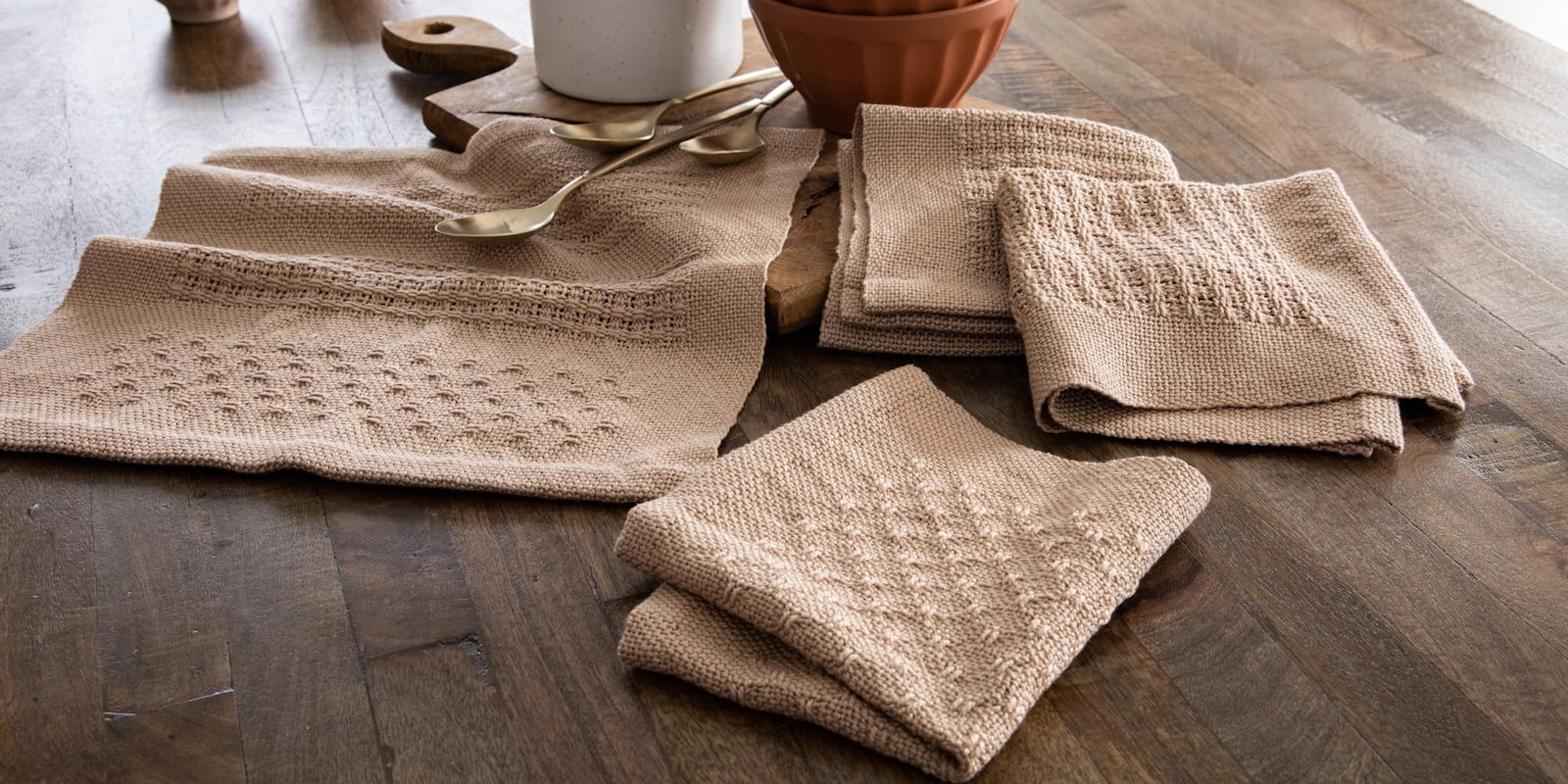The first time you weave lace, it can be nerve wracking. Unlike other types of lace (knitted, crocheted, tatted, etc.), the lace on your loom looks very different from the final product. When you first weave the lace areas, they’ll look like odd floats. It’s easy to worry that you’ve done something wrong—but do not fret! Remember the weaving mantra: It’s not finished until it’s wet-finished!
Wet-finishing is an important part of just about any weaving project (tapestries being one of the few exceptions) because it allows the fibers to move and adjust to their final form. Threads slip and slide into place, some wools might full, and other fibers often “bloom.” While you might not see much difference if you’re weaving some cotton towels in plain weave, for other structures, wet-finishing makes an enormous difference.
 Sara’s lace sampler on the loom doesn’t look too much like lace—yet. Photo credit: Tiffany Warble
Sara’s lace sampler on the loom doesn’t look too much like lace—yet. Photo credit: Tiffany Warble
Let’s see this in action. In the photo above, taken during the shooting of Sara Bixler’s new video course Huck Lace on the Rigid-Heddle Loom, you can see some examples of modified huck lace while still on the loom. The lace areas don’t look terribly lacy; the floats seem pretty loose, and the open areas aren’t obvious. It’s pretty fabric, but it doesn’t look like lace.
Now let’s look at this same fabric after it’s been wet-finished, which you can see in the photo below. The threads have shifted and bloomed to create what is now obviously woven lace. Areas that once looked just kind of sleazy now look properly lacy and much more stable. The cloth is so much more interesting with more texture.
 In this example from her huck lace course, Sara Bixler shows the difference between unwashed (left) and washed (right) lace fabric. Photo by Matt Graves
In this example from her huck lace course, Sara Bixler shows the difference between unwashed (left) and washed (right) lace fabric. Photo by Matt Graves
While the change in fabric might seem like magic, it doesn’t take much on your part to wet-finish lace. As with any other project, you need water, a small amount of mild detergent (no-rinse detergents such as Eucalan and Soak are fine), and a bit of agitation (fiber type will determine the type of agitation needed). If you’re weaving a project, make sure to follow the wet-finishing directions given because sometimes there are special fiber considerations: wools that might full if agitated too much or yarns that have an excess of dye that should be rinsed out.
If you don’t have any instructions on how to wet-finish a project, the general rule of thumb is to treat it the way you would wash the fabric. For cotton napkins, such as Sara Bixler’s À La Carte Napkins shown in the photo at top, you don’t need to be gentle or delicate with them the same way you might with a wool that might full. If you’re not sure, weave a sample or set of samples you can test. Not only will these samples tell you how best to wet-finish your final project, they’ll also be excellent additions to your weaving notes to reference for future projects.
For more information about weaving—and wet-finishing—laces on the rigid-heddle loom, make sure to check out Sara’s new video course.
Happy Weaving!
Christina
Originally published 7/6/2022; updated 11/14/2024

